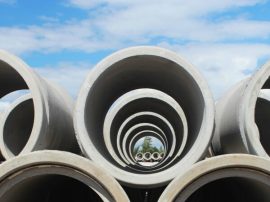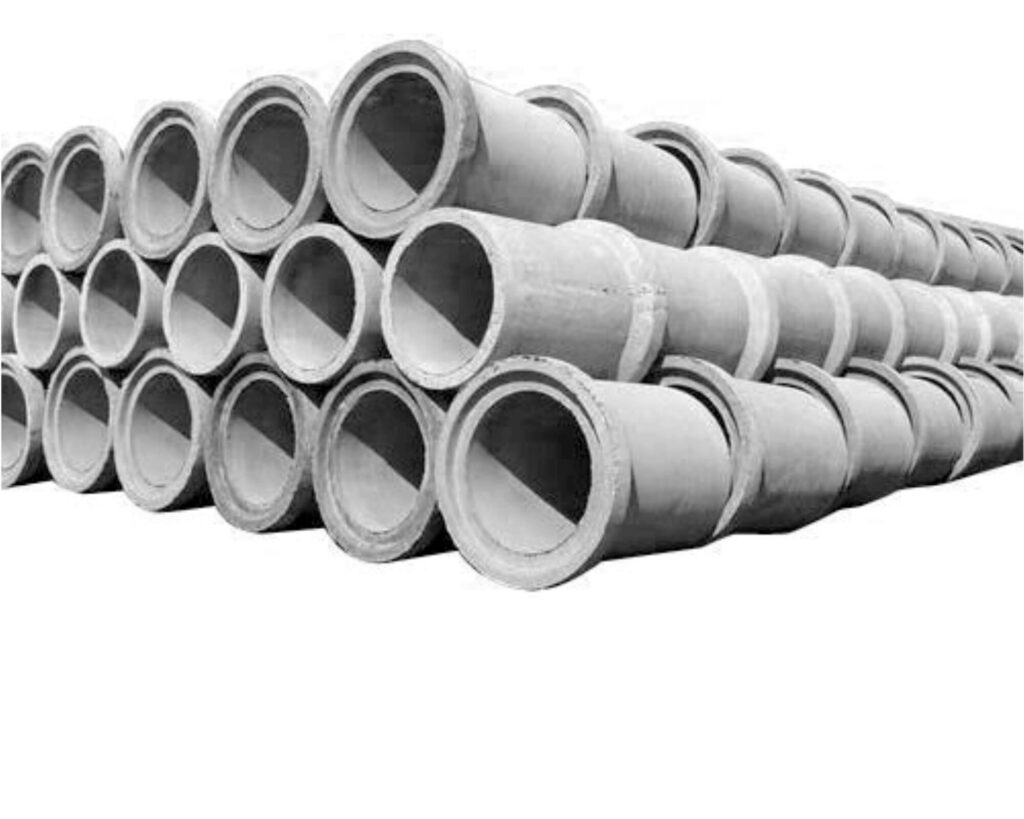For hundreds of years, concrete has been widely used in the construction of various types of structures, most importantly pipelines. For any drainage system, the main requirements include integrity, durability, resistance to damage and concrete pipes serve the purpose. Due to the inherent strength, concrete pipes offer proven resilience as opposed to other pipeline systems. The strength of a precast pipe makes it less susceptible to the effects of poor bedding and installation. When using a flexible pipeline, the structure of the system needs to be built around the pipeline. This is one of the main reasons why concrete pipe material has proven service track record of more than hundred years. So, when it comes to long-term value, concrete offers unmatched value and performance. The structure designed and built into concrete pipe allows design engineers the peace of mind that their choice of pipe material will maintain it’s strength, hydraulic efficiency and resiliency properties that ensure a system’s viability for generations.
Concrete pipes arrive on site at their full strength. They arrive as a proven structure with a tested compressive strength that is known to the engineer, usually having attained greater than 90% of it’s maximum strength. On the other hand, plastic pipes must be site-assembled. Their installation procedure is more demanding, structural integrity must be tested and post-installation laser testing. The fact remains that total cost includes more than the initial price of materials. When using a plastic pipeline, the soil strength must be carefully determined, approved and inspected during installation by the specifying engineer but concrete pipes are much less reliant on the surrounding soil for their structural strength.


However, developers not only look for inherent strength but also look for other advantages that are associated with its strength. With concrete drainage this could mean a number of things like- the product is resistant to damage caused by jetting or rodent attack which otherwise is very common in plastic pipeline. Concrete drainage can also withstand impact damage caused by solid objects being carried through the system during floods and normal operation. Due to their strong and robust quality, they are not prone to damage during storage, handling, installation or use. They do not require special protection against sunlight or heat. Over their service life, they do not deform and thus preserve their structural integrity and hydraulic efficiency.
Today, concrete pipeline provide installed cost savings as they are laid without using a full granular bedding and surround. The excavated material can be reused during installation and this further reduces disposal costs- a key benefit when faced with continued increase in the landfill tax. Their prices are mostly stable unlike drainage products made of plastics which can be affected by surges in oil price. Due to their service life of over hundred years, they keep the maintenance and asset replacement costs to a minimum. With sustainability on the rise, there is an increased focus on what materials are being used up. Environmental factors are now assessed in determining cost effectiveness of a structure’s service life. More and more are wanting pipelines that do not use up precious resources and lower the impact on the environment. So, not only you will be getting the long lasting pipes but you can be confident about how concrete pipes are made in a way that protects the environment
